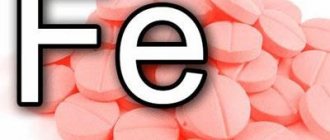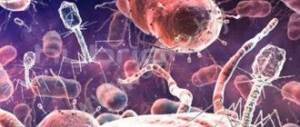Hyperoxia, or oxygen poisoning, is a disruption of the body’s vital processes that occurs due to inhalation of oxygen-containing gas mixtures under excess pressure. This phenomenon provokes destabilization of the central nervous system, respiratory and cardiovascular systems. With a slight excess of oxygen in the tissues, the so-called. oxygen poisoning - clouding of consciousness, tinnitus, dizziness. The cause of oxygen poisoning can be its unusually high concentration in the air - for example, when going outdoors, to the forest, to the mountains. A similar situation occurs among athletes during intense training combined with deep breathing techniques. If the pressure of oxygen-containing gas entering the respiratory system exceeds 1.3 bar, oxygen poisoning begins.
Cause of oxygen toxicity
Hyperoxia is oxygen poisoning that occurs when inhaling a mixture of gases that contains oxygen. If the gas composition is under pressure, brain intoxication will occur. Pure oxygen in a rarefied state will not cause harm to the human body. Such conditions are present for a diver, in space, on an airplane. Complies with pressure chamber conditions.
Causes of oxygen poisoning:
- When a diver works at a depth unacceptable for the functioning of organs, hyperoxia occurs. Intoxication can be triggered by a high oxygen content in the gas composition, serious mechanical damage to the oxygen supply apparatus, or a breakdown in the device’s flushing unit.
- Increased period of oxygen starvation and subsequent entry of gas into the lungs. This can be experienced by people in the mountains at altitude.
- The gas mixture in the pressure chamber contains a high concentration of oxygen.
- The gas pressure in the oxygen mask of the pilot of a high-speed aircraft suddenly changed.
- The partial mechanism for oxygen supply to the body is disrupted.
- Long stay of a city dweller in nature or in a forest (coniferous).
Doctors advise city residents to spend more time in nature. You can get poisoned just by walking, from an excess of oxygen atoms. People who constantly perform activities with oxygen under pressure must follow instructions and control their breathing.
How can hyperoxia result?
If everything is fine with the body, then the transport of oxygen to organs and tissues occurs uninterruptedly. First, the element enters the pulmonary system. After this, it combines with hemoglobin from red blood cells. It is the main connecting link between the lungs and other organs.
Once in other cells, hemoglobin goes through a recovery stage. This is necessary so that oxygen is successfully delivered to the organs. After this, carbon dioxide is added to it, which is a processing product. A person removes its excess simply by exhaling again.
All this leads to pronounced hypercapnia, which indicates carbon dioxide poisoning. This is expressed in shortness of breath, redness of the skin of the face, headaches, and severe cramps. This situation may even end in fainting.
We recommend reading: What to give a child with fever
The main feature of oxygen poisoning is the absence of a latent course of intoxication. As soon as some imbalance occurs with the respiratory mixture, the body instantly responds to the changes that have occurred. The condition worsens even faster if the patient:
- overheated or overcooled,
- carried out intense mental workload,
- inhales a mixture of neutral gas.
All this suggests that the question: is it possible to breathe pure oxygen should be answered in the negative. Only in medical institutions can doctors regulate the percentage of oxygen supply in the breathing mixture, but these should not be independent experiments that lead to dire consequences.
Usually, all instructions regarding first aid for victims of various types of gases state the need to take the victim out into fresh air. Because of the stereotype that oxygen in the air always brings only benefits, it seems as if oxygen poisoning is impossible. But professional divers and people whose activities are closely related to the use of oxygen cylinders will say the opposite.
It has been proven that oxygen in its pure form is similar to poison, which carries a general toxic principle. In medical terminology, such intoxication is briefly called hyperoxia. It indicates that the victim received an increased dose of oxygen during specific treatment in a pressure chamber, or became a victim of oxygen recompression.
Types of intoxication
Doctors distinguish three degrees of intoxication:
- The vascular degree poses a risk to life. Occurs at high pressure of the gas mixture. Has acute manifestations of signs of poisoning. Blood vessels dilate sharply, causing a decrease in blood pressure. The fingers go numb, a severe headache with severe dizziness appears. Hemorrhages on the skin may occur. The heart muscle is under severe stress, which leads to serious disorders. The victim may die.
- A gas composition pressure of 3 bar can provoke a convulsive degree of intoxication. Accompanied by abnormalities in the central nervous system. A person develops vision problems, increased sweating against the background of pale skin. The victim really wants to sleep. After some time, vomiting, muscle cramps, and fainting are recorded. Failure to provide assistance leads to pulmonary edema. The convulsive stage has substages - precursors, convulsive state and terminal stage.
- Precursors of poisoning are the initial stage, characterized by numbness of the fingers and a depressed state. Lasts 30 minutes or more. Breathing and heartbeat become rapid. At the end, pallor, severe sweating (cold sweat) is noted, and involuntary contraction of the facial muscles is noticeable on the face.
- A convulsive state is manifested by the presence of muscle cramps, accompanied by fainting. The duration of each attack is approximately 10 seconds. Between attacks, there may be involuntary passage of urine and feces. During short breaks, the patient experiences rapid breathing and pulse.
- The onset of the terminal stage indicates a complete disruption of the breathing process. If help is not provided, the person will stop breathing. To prevent the last stage, the cause of intoxication must be eliminated.
- The mild degree occurs when inhaling a low-pressure gas composition. The structure of the lungs and respiratory tract suffers. In the oral cavity there is severe dryness and swelling of the nasal mucosa. After some time, a strong cough appears, and a burning sensation is felt in the chest area. Without assistance, the victim begins to experience internal bleeding - the liver, intestines, heart muscle and brain are affected.
Oxygen poisoning requires qualified assistance, which depends on the degree of intoxication.
Forms
Depending on the exact symptoms that accompany oxygen poisoning, there are three different forms of the disease, each of which has its own special characteristics and requires a unique therapy:
- Pulmonary form - the main organs affected by this type of poisoning are the human lungs and respiratory tract. The mucous membrane is noticeably irritated, a feeling of discomfort and cough appear. An increase in the symptoms of this type of lesion provokes hemorrhages and other disorders. Most often, this problem manifests itself from prolonged contact with the irritant and completely disappears a few hours after getting rid of the source of poisoning.
- Convulsive form - patients experiencing this form of the disease experience significant impairment of hearing function, increased irritability, strong indications and twitching in the muscles. As the symptoms of this disease intensify, severe seizures occur, which at first glance resemble epilepsy. Divers are at great risk of developing this form - it is they who, if a problem arises, are at risk of drowning in the absence of outside help. Eliminating the causes of the disease allows you to get rid of the consequences, the patient falls into a sleep lasting several hours, after which all symptoms disappear.
- Vascular form - this type of disease is associated with a sharp decrease in blood pressure, dysfunction of the cardiovascular system and cessation of cardiac activity.
Note! Partial pressure exceeding five bar contributes to the almost immediate manifestation of symptoms, resulting in instant loss of consciousness and sudden death.
Signs of intoxication
An overdose of gas is determined by a bluish tint of the extremities. If the cause is eliminated at this time, further poisoning can be prevented. A small amount of oxygen in the tissues gives the effect of intoxication.
Symptoms of oxygen intoxication:
- There is a smoky veil in the eyes.
- There is confusion in consciousness.
- Presence of tinnitus.
- Feeling dizzy.
Such signs occur with strong inhalation.
Signs of oxygen toxicity:
- Vision decreases;
- Loud noise in the ears;
- Vomiting with nausea;
- There is a tingling sensation in the fingers and face;
- An excited state turning into an anxious state;
- Presence of dizziness;
- Muscle cramps;
- Heart rate slows down;
- Choking appears;
- The face takes on a reddish tint.
The air itself is safe for humans. But a high concentration of oxygen is dangerous due to the onset of poisoning. Not all symptoms appear at first, only some. Depends on the degree of damage to the body.
Oxygen poisoning: symptoms
In medical practice, the acronym ConVENTID was coined to refer to all the symptoms of oxygen poisoning:
- Con (Convultions) – convulsions;
- V (Visual symptoms) – visual impairment;
- E (Ear symptoms) – hearing damage;
- N (Nausea) – periodic vomiting, nausea;
- T (Twitching and thingling symptoms) – uncontrollable muscle twitching, tremor;
- I (Irritability) – increased anxiety, restlessness;
- D (Dizziness) – dizziness and lack of coordination.
Initially, the symptoms of oxygen poisoning represent a protective reaction of the body. At the same time, breathing quickens, blood vessels constrict and the volume of circulating blood decreases. However, the protective reaction often leads to the opposite effect - due to the narrowing of capillaries and slowing blood flow, carbon dioxide accumulates in the tissues.
This, in turn, causes vasodilatation. With prolonged exposure, pathological reactions occur, accompanied by pronounced signs of poisoning.
Symptoms of poisoning of one group or another may predominate, but most often they appear in the following sequence:
- violation of the rhythm of breathing (inhalation prevails over exhalation);
- numbness of fingers;
- worry and anxiety;
- "goosebumps" on the skin (paresthesia);
- lip trembling;
- dizziness (so-called oxygen intoxication);
- nausea;
- convulsions and seizures of the type of epilepsy;
- respiratory spasms;
- drowsiness or euphoria;
- severe vomiting with spasms, blindness (for a long time);
- loss of consciousness followed by amnesia.
Causes causing complications
Complications from poisoning can occur for a number of reasons:
- Intoxication is accompanied by active physical activities.
- There is a sign of hypothermia or overheating in the patient.
- The person is highly sensitive.
- The gas mixture contains carbon dioxide.
- A lot of carbon dioxide has accumulated in the tissues of the body.
If such factors complicating the victim’s condition are present, help is required immediately.
Factors that aggravate the situation
Symptoms of oxygen oversaturation are aggravated by the following factors:
- overheating;
- individual characteristics;
- physical activity;
- hypothermia;
- the presence of harmful gases in the breathing mixture, including carbon dioxide;
- accumulation of carbon dioxide in the body.
Oxygen toxicity may result from the use of regenerative breathing devices. Also, the cause is often the incorrect use of a pressure chamber in case of decompression.
First aid
To begin, the victim must be removed from the site of the injury - the cause of the poisoning must be eliminated.
First aid consists of a number of activities:
- If the patient is unconscious, he needs to be revived.
- The presence of muscle cramps requires preventing additional injuries - you cannot hold or fix them in one position.
- The vascular stage of poisoning requires staying in a well-heated room with ideal ventilation for 24 hours, but bright light is not allowed.
- The patient should be in a semi-sitting position - it is permissible to apply special tourniquets; this position is recommended for about 45 minutes.
- If the poisoning is mild, the victim needs long, restful sleep.
Symptoms of intoxication should subside within two days. After providing first aid, you must call an ambulance. Self-medication is prohibited.
First aid and further treatment
The degree of damage to the body, as well as the duration of the recovery course, may depend on how quickly first aid is provided. Since divers usually suffer from hyperoxia, they must be promptly raised to a safe depth.
The main ways to provide assistance before the ambulance arrives include:
- Measures aimed at bringing you to your senses. If this happened at home or at work, then it is enough to pat the victim on the cheeks. But if trouble happens underwater during a deep descent, it is recommended to sharply spray the victim’s face with an oxygen stream.
- Make sure that the patient is not injured during convulsions. But fixing the limbs in such a situation is contraindicated. At this stage, decompression should be abandoned.
- Ensure peace until specialists arrive. It is best to rest in bed in a room that is well heated, has a working ventilation system, and curtains to create dim light.
As soon as medical personnel arrive at the scene, the patient is hospitalized. Already on the way to the inpatient department of the hospital, he may be given drugs to help cope with seizures.
If the victim was found to have a pulmonary form of this poisoning, then he is advised to apply venous tourniquets to the extremities. Doctors also carry out a procedure to suck out the foam that has formed in the lungs. Diuretic drugs can be an additional help.
Next, symptomatic treatment is carried out, which almost always begins with the prescription of medications that help restore cardiac activity. In some cases, it is impossible to do without stimulating the respiratory function and taking a number of painkillers.
In especially severe cases, even the prescription of antibiotics is allowed.
Treatment
Doctors will assess the victim’s condition and decide on further therapy. Tests and diagnostics will be required. If the presence of an infectious or inflammatory process in the lungs is detected, a course of antibiotics will be prescribed. Inhalation of drugs is recommended to relieve pulmonary edema.
Mild stage oxygen poisoning requires stopping muscle cramps, taking painkillers and maintaining complete rest. If it is not possible to stop the seizures, the medicine is administered intramuscularly. Any object must be placed between the teeth to prevent tongue biting or jaw injury.
Drugs to maintain the heart muscle are prescribed for disorders of the cardiovascular system. All medications and courses of treatment are selected by the doctor after receiving the results of the relevant tests. You cannot self-medicate.
Consequences of intoxication
A high concentration of oxygen in the blood provokes an imbalance between oxidized and reduced hemoglobin. And this leads to an excess of carbon dioxide - hypercapnia. This condition is characterized by a severe headache, fainting, shortness of breath and a red face.
The consequence of poisoning is a failure of oxygen metabolism in the body tissues. A high amount of free radicals are produced, which lead to the death of cell membranes. Toxic compounds are formed in the body that have a detrimental effect on the condition of the victim. The presence of neutral gas worsens the condition.
Oxygen and its features
Oxygen is one of the most important chemical elements. It is difficult to imagine modern life without oxygen. It is an excellent remedy for supporting growth as well as development. It allows a person to breathe, and all organs to perform their direct functions. It is believed that the air must contain at least 20% oxygen.
Too large a percentage of oxygen is required only if there is a concentrated supply of this chemical element to the lungs. This is usually true when diving to great depths. It is also worth noting that today oxygen is used as one of the constituent elements for treatment.
As many people know, insufficient oxygen can cause death. If we are talking about an excess, then the body will also suffer harm. That is why there should not be too much oxygen in the air, but not too little either. Only in this case will balance be maintained.
Preventive measures
People who have a professional activity that involves gas mixtures under pressure are required to take the following precautions:
- Divers are advised to dive only to the permissible depth.
- Stay under water for as long as the gas cylinder allows.
- Carefully study the markings and check the integrity of the cylinder.
- Before starting work, independently check the equipment for safety, serviceability and working condition.
You can prevent the onset of oxygen poisoning by taking precautions. Excess oxygen is dangerous for humans. Therefore, you should be careful and avoid situations that threaten your health.
Rules for interaction with oxygen
Measures to prevent hyperoxia consist of following strict rules for the use of oxygen-containing gas mixtures:
- it is necessary to regularly monitor the technical serviceability of regenerative devices;
- it is forbidden to exceed the norms for patients to stay in the pressure chamber;
- It is important to follow the instructions regarding the maximum dive level when using gas mixtures with increased oxygen content;
- if several mixtures are used, cylinders and regulators must be marked and used in the correct order;
- When diving when descending to a depth of 50–60 meters, it is necessary to control the dive time and not exceed safe values.











